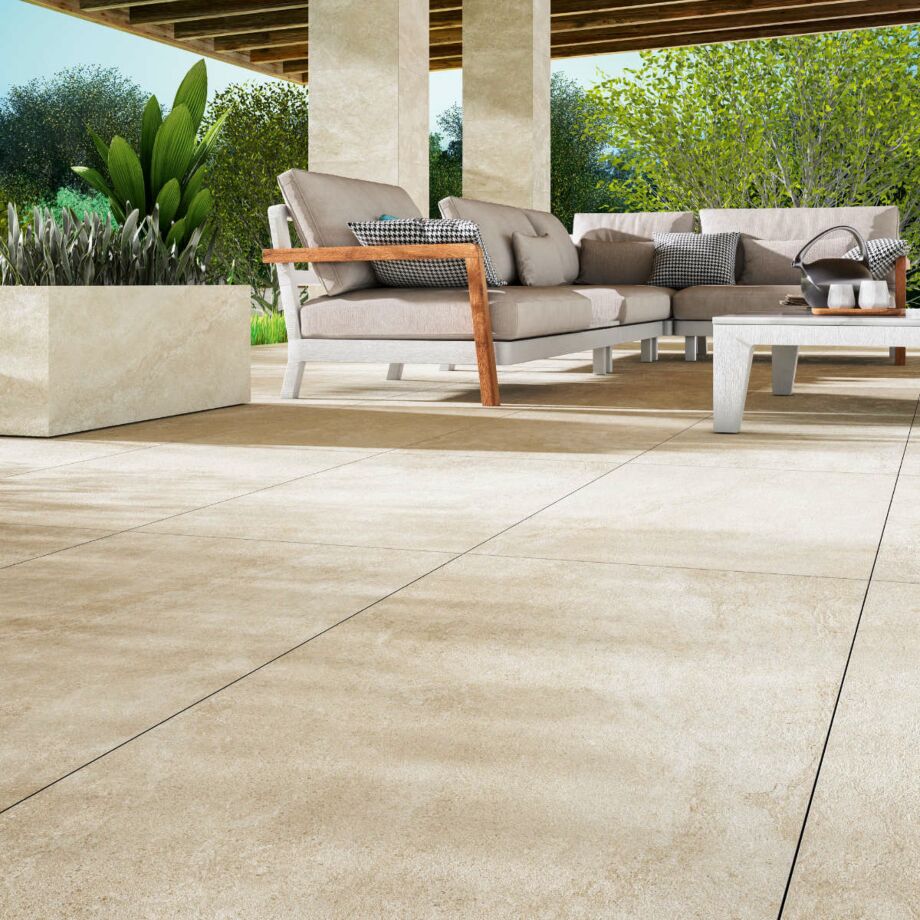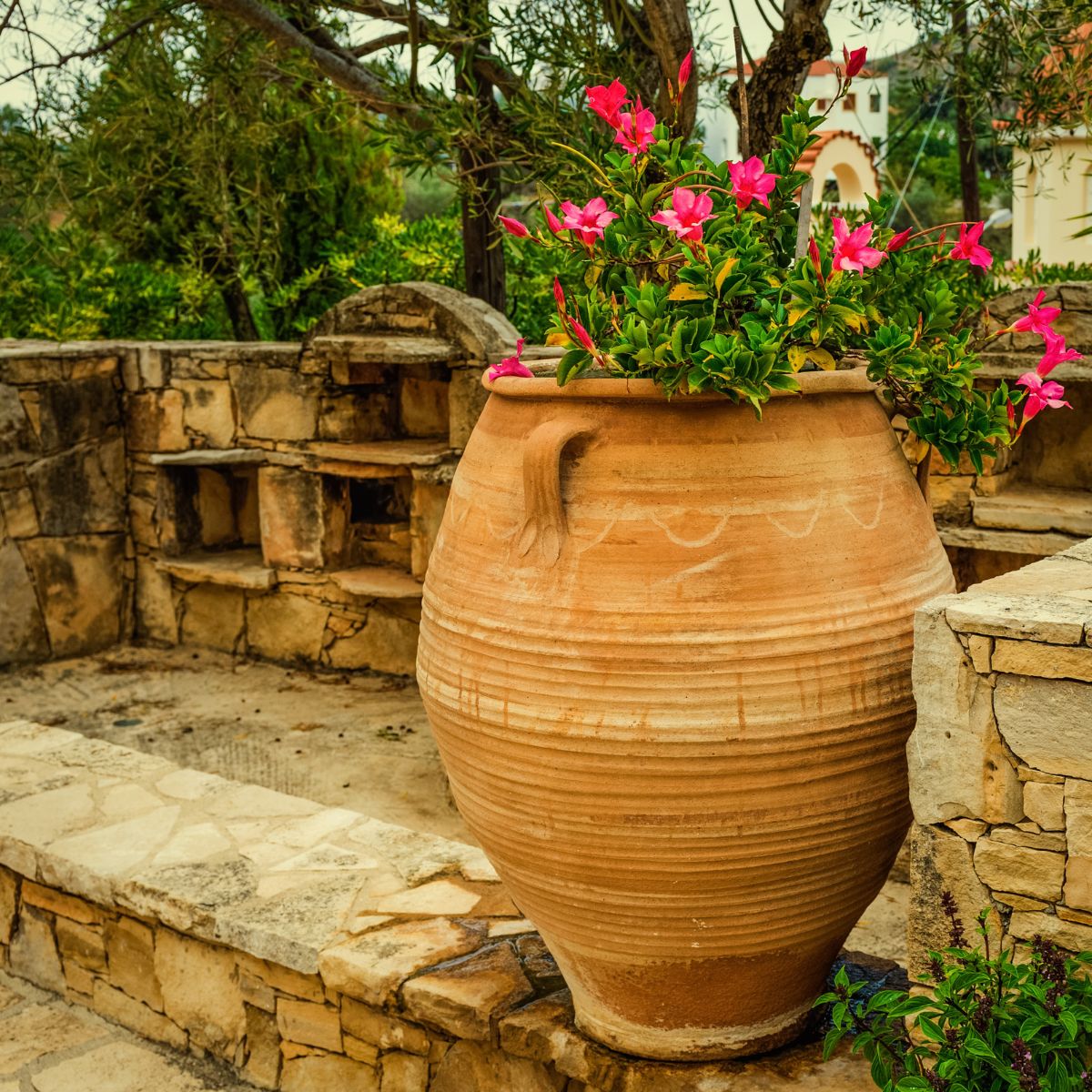
When we travel abroad to Mediterranean countries, we often admire their beautiful gardens with their crisp looking travertine paving in warm cream tones and bright coloured planting or the rustic terracotta tiles and sun-baked clay planters.
Fortunately, creating the same 'holiday feel' garden is straightforward to do using a handful of the most appropriate products. However, there are common mistakes that we must avoid to achieve the look we are after.
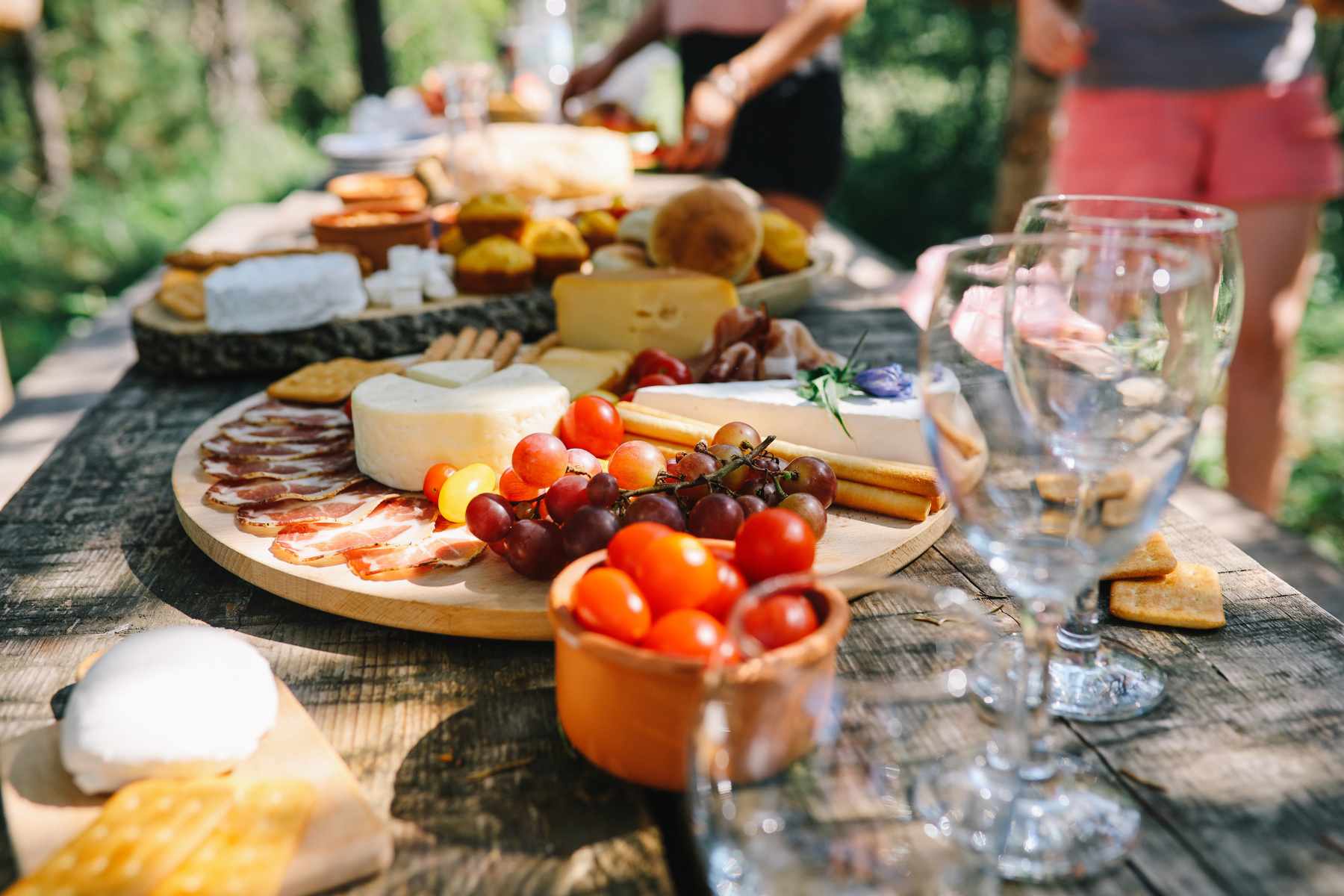
The first thing to consider when creating a Mediterranean-style garden in the UK is the natural light. In Mediterranean countries, natural light has a yellow tint due to their proximity to the equator and the number of hours of natural light, making it far warmer in tone. In contrast, the natural light in the UK contains more blue tones. This is important to consider as the colours used within Mediterranean gardens will appear different in the UK. For example, white rendered walls often seen abroad, coupled with bright blue skies and golden lighting, create an ambient, warm appearance. In contrast, the same white rendered walls will appear as a blue-grey colour in the UK. To create the same ambience, an injection of warmer tones is necessary within the garden. It is best to use ivory colours instead of white if you want to make your garden feel warm and inviting, rather than white, which will appear colder and not so in keeping with a Mediterranean feel.
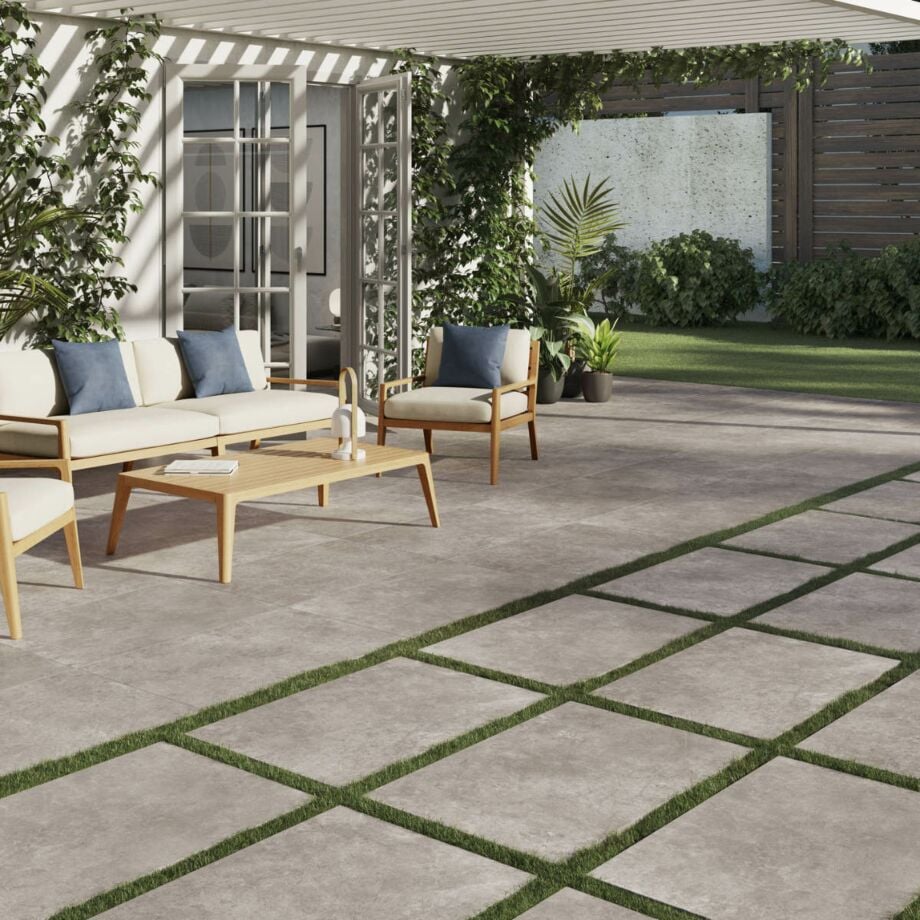 |
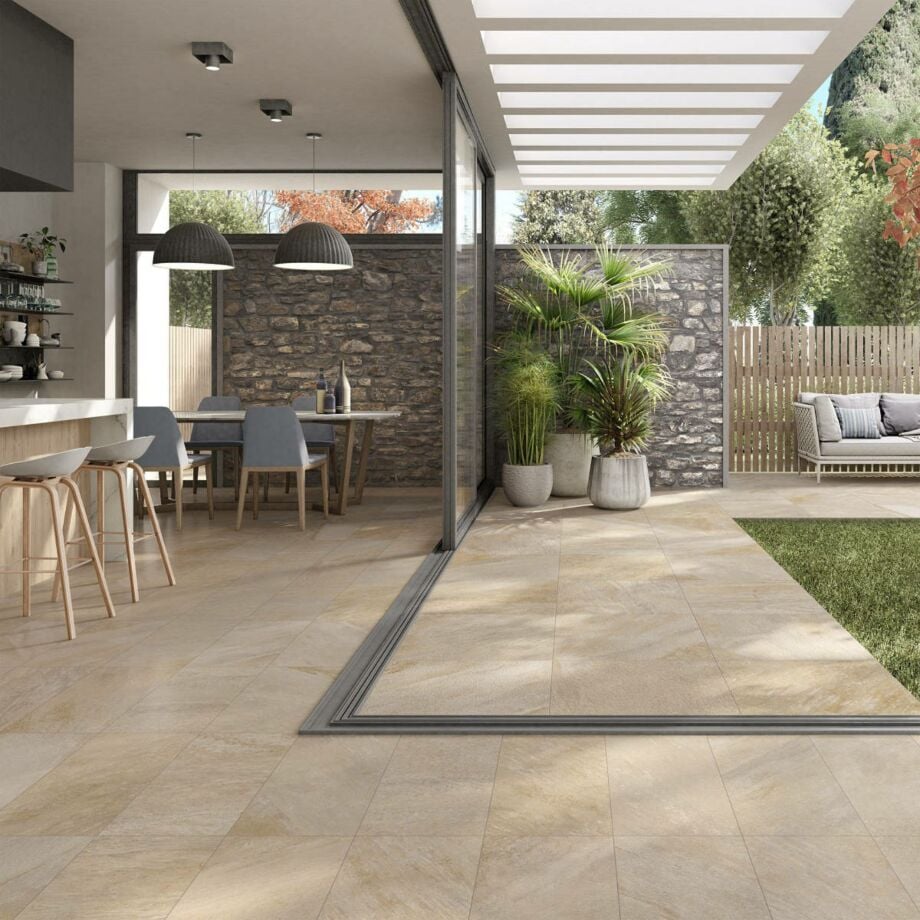 |
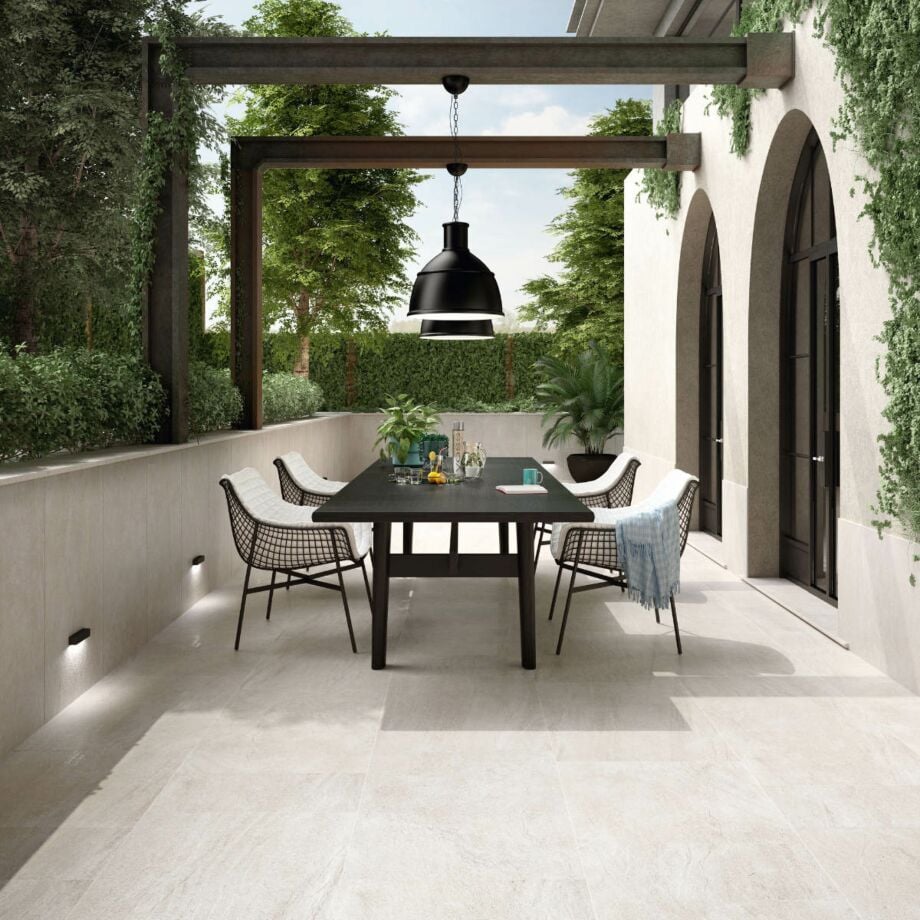 |
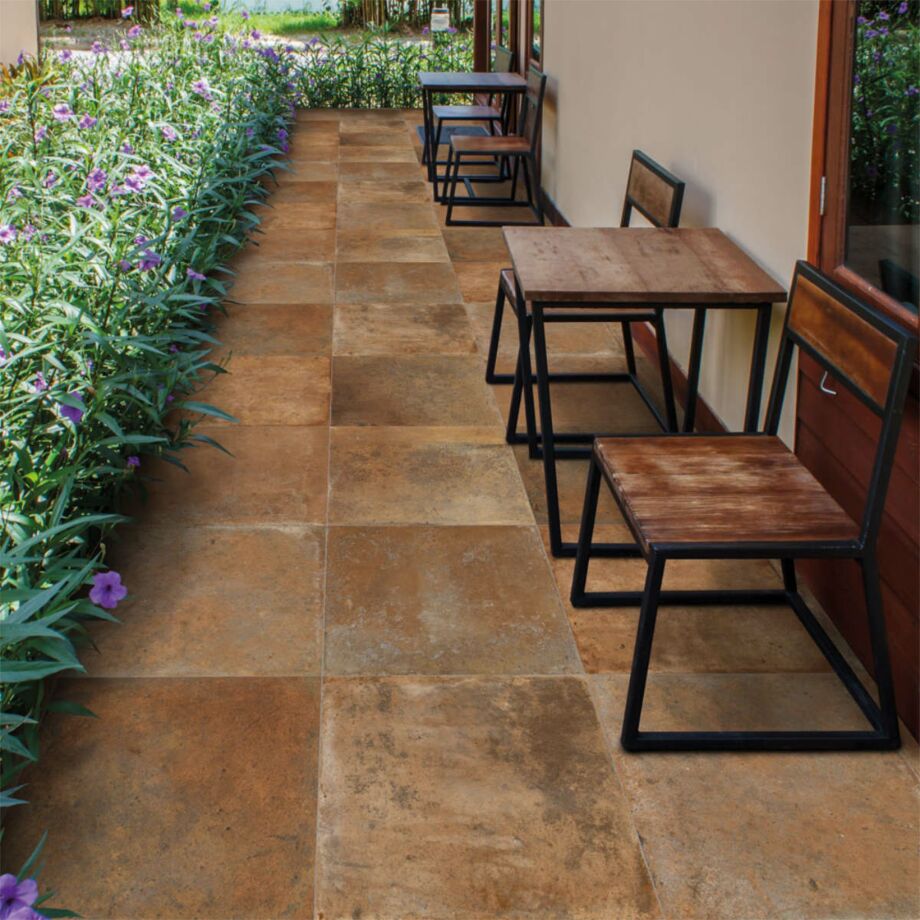 |
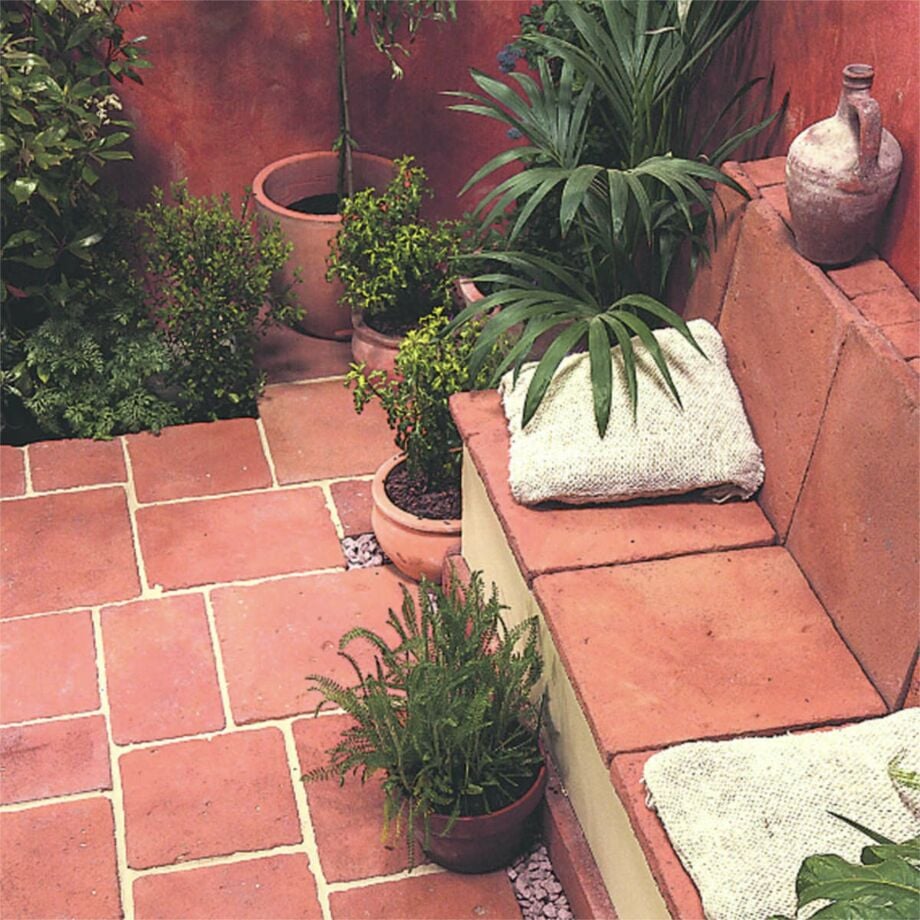 |
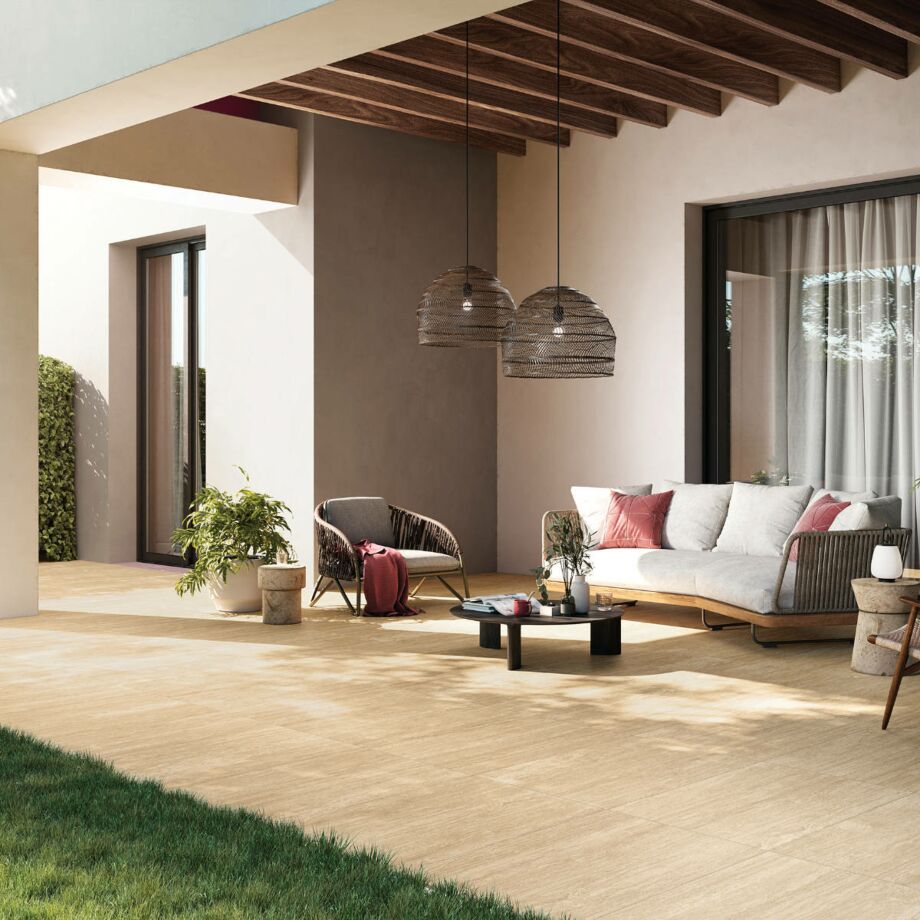 |
Natural travertine paving is a stone often associated with Italy and Spain, with its warm cream tones and lightly pitted, marble-like appearance. Although it's possible to use this type of stone paving in the UK, it's not strongly recommended as it is more porous than many other stone types and distinctly more prone to algae growth as a result. In hot countries, this is not really a problem, but in the UK, with its damp winters, you will most likely spend considerable time cleaning this type of paving. It's possible to use porcelain paving with a travertine appearance instead of natural travertine. This is one of the most hard-wearing and non-porous paving materials, so even when using the lightest ivory tones, it is resistant to algae and far easier to clean than natural stone.
To create an Italian-style garden, use tall columnar cypress trees, clipped box hedging, olive trees, and pots with red geraniums. Add a pergola and use it to grow wisteria with its long purple fronds and jasmine for its delicate fragrance.
For a rustic Spanish-style garden, combine terracotta style paving to bring instant aged tones. Once again, there are porcelain options in a terracotta style, and this is always a good option due to its ease of maintenance. Consider using smaller setts to form a courtyard style and add a black wrought iron bistro set to create a cosy place to sit. To create more of a Moorish appearance, use mosaic tiles as an accent, for example, as the fascia to a set of steps or as a centrepiece to a larger paved area, similar to a rug between sofas.
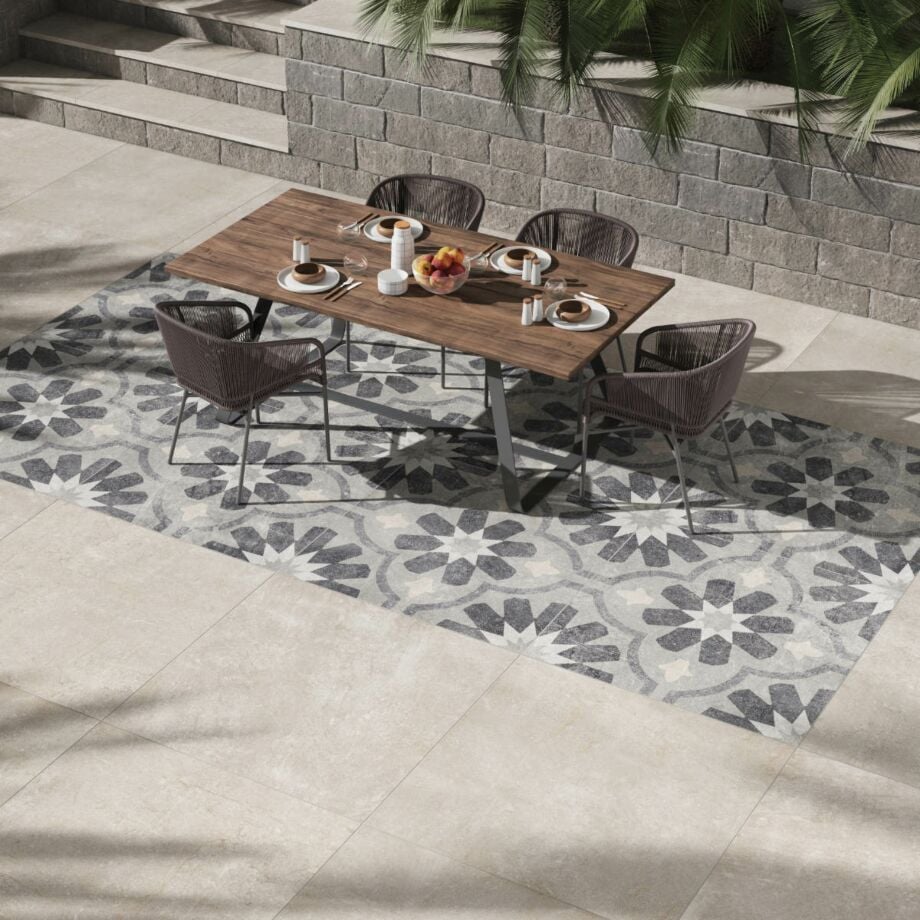 |
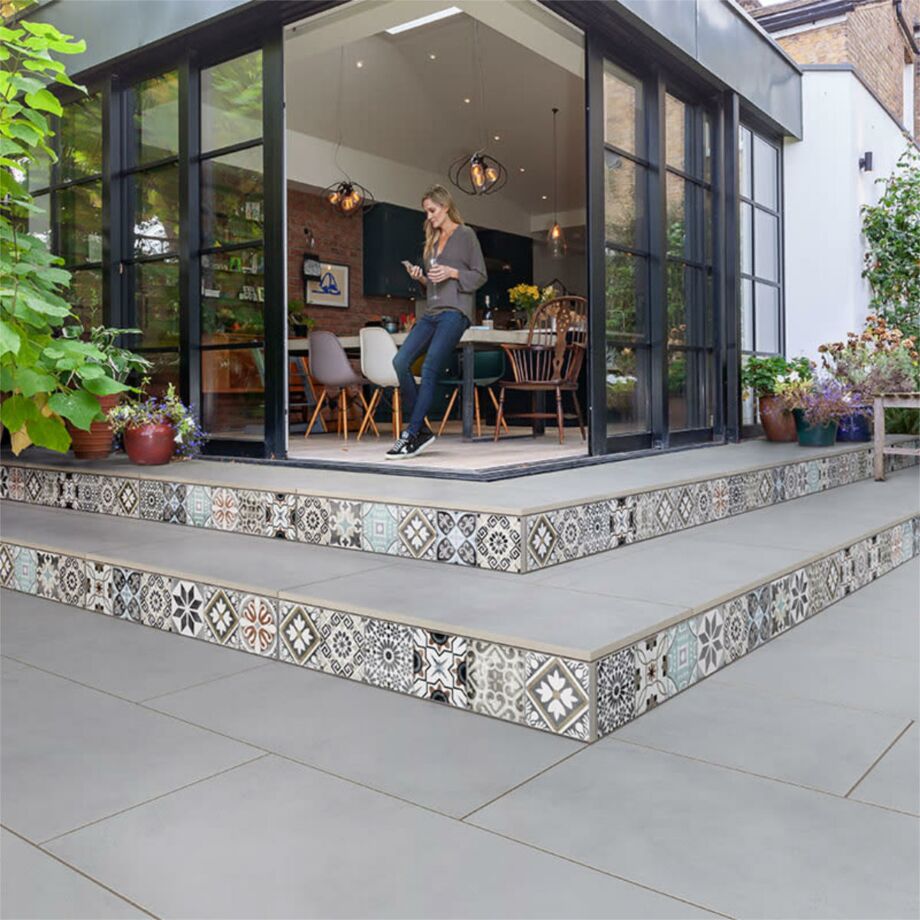 |
 |
Combine with oversized terracotta pots or introduce glazed blue pottery and add large palms, olive trees, or flax plants. Intersperse planting beds with lavender, red geraniums, agapanthus, and tobacco plants for fragrance. Ensure your pots are frost-proof if leaving them outdoors all winter. Add cream-coloured pebbles on top of planting beds as a decorative finish. Formal water features always work well in a Spanish-style garden, with a single bowl of water or a simple fountain as a finishing touch. More ornate stone features are also typical in Spanish garden style and add an attractive traditional quality. To fully enjoy your Mediterranean garden throughout the warmer months, consider adding a stone stove so you can cook outside or make your own pizza oven! This will add to the authentic feel of your garden where it is all about relaxing, enjoying time with friends and family, and creating memories. In conclusion, creating a Mediterranean-style garden is not difficult. All you need to do is to choose warm-toned materials, use hard-wearing and non-porous paving materials, and select plants that thrive in Mediterranean climates, but can also cope with the cold and wet UK weather. It's all about keeping the design simple yet effective and remembering that Mediterranean gardens are meant to be enjoyed outdoors. By following these tips, you'll soon have a beautiful and functional Mediterranean garden that will be the envy of all your neighbours.
|
Combine with oversized terracotta pots or introduce glazed blue pottery and add large palms, olive trees, or flax plants. Intersperse planting beds with lavender, red geraniums, agapanthus, and tobacco plants for fragrance. Ensure your pots are frost-proof if leaving them outdoors all winter. Add cream-coloured pebbles on top of planting beds as a decorative finish.
|
Formal water features always work well in a Spanish-style garden, with a single bowl of water or a simple fountain as a finishing touch. More ornate stone features are also typical in Spanish garden style and add an attractive traditional quality. To fully enjoy your Mediterranean garden throughout the warmer months, consider adding a stone stove so you can cook outside or make your own pizza oven! This will add to the authentic feel of your garden where it is all about relaxing, enjoying time with friends and family, and creating memories. In conclusion, creating a Mediterranean-style garden is not difficult. All you need to do is to choose warm-toned materials, use hard-wearing and non-porous paving materials, and select plants that thrive in Mediterranean climates, but can also cope with the cold and wet UK weather. It's all about keeping the design simple yet effective and remembering that Mediterranean gardens are meant to be enjoyed outdoors. By following these tips, you'll soon have a beautiful and functional Mediterranean garden that will be the envy of all your neighbours.
|
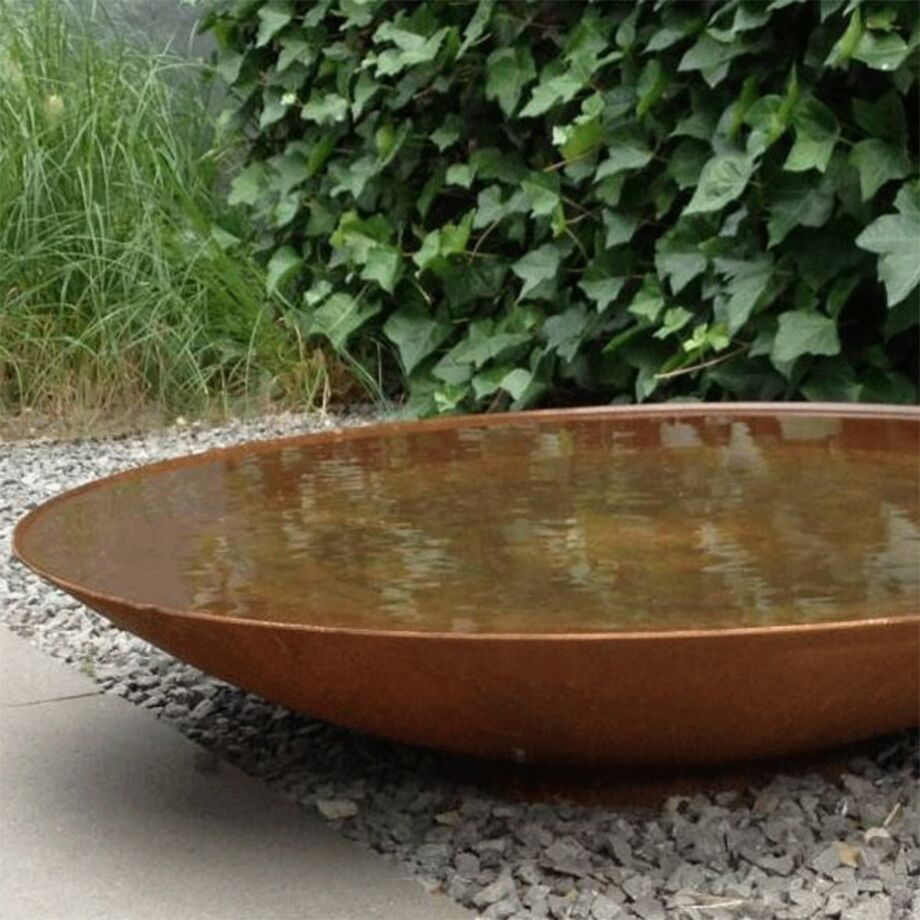 |

